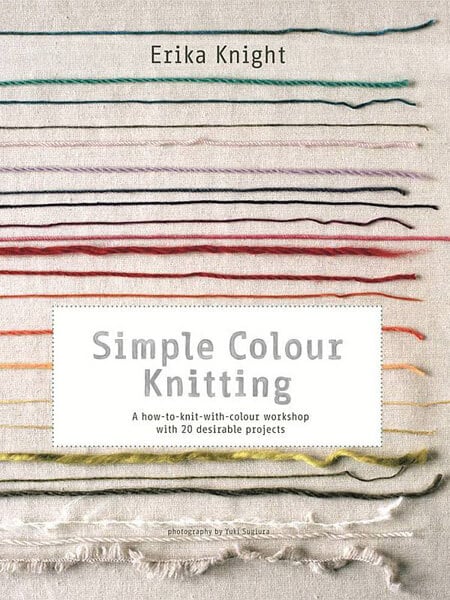Learn how to knit colourwork with these helpful tips! Colourwork patterns can be intimidating to a newbie knitter, but these colourwork tips and tricks will have you knitting complicated designs in no time.
Even experienced knitters can be daunted by the idea of a colourwork pattern. They knit intricate cable charts but never touch a colourwork project because they've heard it can be tricky. Let's break it down into some easy to digest tips and videos that will have you well on your journey to learn how to knit colourwork patterns.
What's the difference between intarsia and stranded/Fair Isle knitting?
It's a simple difference, but an important one. With intarsia knitting, the secondary color stays with the design, and you pick it back up on the next row or round.
With Fair Isle knitting, you carry the secondary color(s) with the work as you go, creating "floats" behind the work. For this reason, Fair Isle/stranded knitting work is typically much thicker than intarsia designs.
Wrap your yarn: catch those floats
Whether you're knitting with the instarsia or the Fair Isle (stranded) method, it's of utmost importance that you wrap your yarn every time you change color. Yes, it's annoying, but if you don't do it, you will end up with holes that can destroy your work! At the very least, the holes will look unsightly and your project will be fragile and unstable.
Wrapping your yarn is also known as "catching floats." You should catch your floats every three or four stitches to reduce the risk of tangles or puckers. Here's a helpful tutorial video from Knit Purl Hunter on YouTube to explain it:
Keep yarn balls untangled
This is easier said than done, but taking a few moments to rearrange your yarn each time you change colors will save you hours of aggravation in the long run. You know what they say...

...in this case it's about untangling your colors before they end up tangled beyond all help. For the truly dedicated and gifted, there's the option of knitting English style, which allows you to hold one color in each hand, thereby reducing the risk of tangles and mess. Here's a video example from CottonandCloud that clearly illustrates that method:
Prevent puckers
Puckers and pulls are the scourge of colourwork knitting. Don't get discouraged, these happen to almost everyone who is learning how to knit colourwork! Puckers and pulls occur when one of two things happen:
1. Your floats (the yarn you hold behind the work that you aren't currently knitting with) are too tight.
2. Your overall tension is too tight.
While it's tempting to pull that yarn tight to prevent holes, it will ruin your work if you're not careful.
Start simple
When you're a knitter who's just learning how to knit colourwork, don't start off with an intricate lace weight Nordic design. You'll just be setting yourself up for failure and disappointment (and possibly ruined yarn). Set yourself up for success with a pattern that's interesting but accessible. Try the Simple Color Knitting book by Erika Knight - it features 20 accessible designs that all teach you something new about colourwork, from intarsia, to stranded, to weaving in color once a project has been cast off.

Is intarsia or stranded a better choice for this project?
While most patterns will tell you which method to use, sometimes you'll be left to "free-style" and make your own decisions. On the whole, it's usually an easy decision to make. If the colourwork design is a big connected design, like a heart, many times intarsia will be right for that job. If the design continues throughout the work, then stranded (Fair Isle) is probably the right choice. If in doubt, ask a friend! We knitters are a helpful bunch and someone is always happy to lend an ear.
We hope that this mini-guide helped anyone who's just learning how to knit colourwork. Happy knitting!



